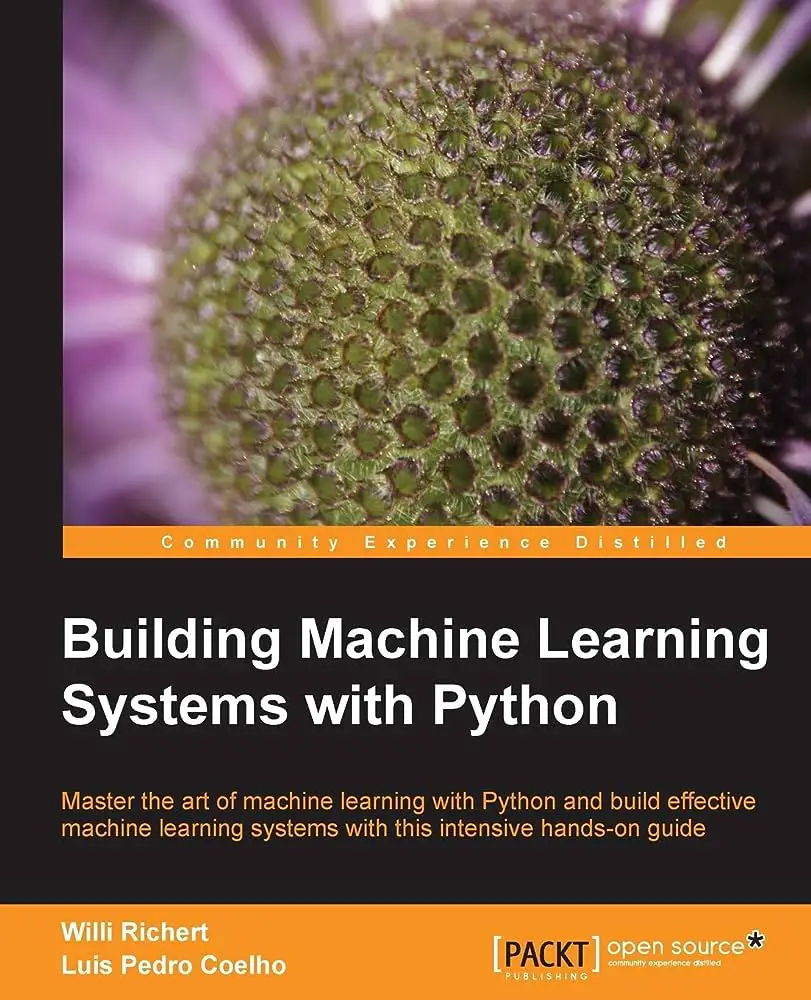This tutorial provides a hands-on introduction to bayesian deep learning for beginners. Bayesian deep learning is a powerful approach that combines the flexibility of deep learning with the uncertainty modeling capabilities of bayesian inference.
In this tutorial, you will learn the fundamentals of bayesian deep learning and how to implement it in practice. Whether you are new to deep learning or have some experience, this tutorial will help you understand the principles behind bayesian deep learning and equip you with the knowledge to apply it to your own projects.
So, let’s dive in and explore the world of bayesian deep learning together! Keywords: hands-on, bayesian deep learning, tutorial, beginners, uncertainty modeling, implementation, principles, projects

Credit: www.simplilearn.com
What Is Bayesian Deep Learning?
Bayesian deep learning is a powerful and emerging field that combines deep learning with bayesian statistics. By incorporating the principles of bayesian inference into deep learning models, we can obtain more meaningful and reliable predictions. In this section, we will dive deeper into the concept of bayesian deep learning and explore its key concepts, terminologies, and applications.
Understanding The Basics
- Bayesian deep learning combines the flexibility of deep learning with the probabilistic approach of bayesian inference.
- Traditional deep learning methods often lack uncertainty quantification, which can hinder decision-making in certain applications.
- Bayesian deep learning addresses this limitation by modeling the uncertainties associated with the parameters and predictions of a deep learning model.
- By leveraging bayesian inference, we can estimate the posterior distribution of the model’s parameters given the observed data.
- This posterior distribution provides a more holistic representation of the uncertainties in the model and enables us to make more informed decisions.
Key Concepts And Terminologies
- Prior distribution: In bayesian deep learning, the prior distribution represents our belief about the parameters of the model before observing any data. It incorporates any existing knowledge or assumptions we have about the parameters.
- Likelihood function: The likelihood function describes the probability of observing the data given the model’s parameters. It measures how well the model explains the observed data.
- Posterior distribution: The posterior distribution is the updated distribution of the model’s parameters after incorporating the observed data. It combines the prior distribution and the likelihood function using bayes’ theorem.
- Markov chain monte carlo (mcmc): Mcmc methods are commonly used in bayesian deep learning to sample from the posterior distribution. These methods allow us to estimate the parameter values and their uncertainties.
- Variational inference: Another approach to approximate the posterior distribution is through variational inference. It involves fitting a simpler distribution to the posterior distribution using optimization techniques.
Applications Of Bayesian Deep Learning
- Uncertainty estimation: Bayesian deep learning enables us to quantify uncertainties in predictions. This is particularly useful in applications such as medical diagnoses, autonomous driving, and financial risk management, where accurate uncertainty estimation is crucial.
- Transfer learning: Bayesian deep learning allows us to transfer knowledge from one task to another by leveraging the learned uncertainties. This transfer of knowledge can help improve the performance of models in scenarios where limited labeled data is available.
- Outlier detection: By considering uncertainties in the predictions, bayesian deep learning can effectively detect outliers or anomalous data points. This is valuable in various fields, including fraud detection, anomaly detection in cybersecurity, and quality control.
- Active learning: Bayesian deep learning can guide the selection of informative data points for labeling, thereby reducing the annotation effort in tasks that require labeled data. Active learning strategies based on uncertainties can be used to prioritize data points that are most likely to improve the model’s performance.
Now that we have covered the basics, key concepts, and applications of bayesian deep learning, we are ready to explore further. In the next section, we will delve into the practical implementation of bayesian deep learning models.
Getting Started With Bayesian Deep Learning
Bayesian deep learning is an exciting field that combines two powerful concepts: deep learning and bayesian statistics. By incorporating uncertainty into the learning process, bayesian deep learning allows for more robust and reliable predictions. If you are a beginner looking to explore this fascinating domain, this section will guide you through the essential steps to get started.
Setting Up The Environment
To begin your journey into bayesian deep learning, it is crucial to have a well-configured environment that supports your experimentation and model development. Follow these steps to set up your environment:
- Choose a programming language: Python is a popular choice for deep learning, thanks to its vast range of libraries and frameworks.
- Install python: Download and install the latest version of python from the official website.
- Utilize a virtual environment: Create a virtual environment using tools like virtualenv or conda to isolate your project dependencies.
- Install necessary packages: Install deep learning libraries like tensorflow, pytorch, or keras, along with probabilistic programming frameworks like edward or pymc3.
Acquiring And Preparing Data
Data is the lifeblood of any machine learning project, and bayesian deep learning is no exception. Here are the key points to consider when acquiring and preparing data:
- Identify the data requirements: Determine what type of data is required for your particular problem, such as images, text, or time series.
- Gather relevant data: Source or generate data that aligns with your problem domain. Explore public datasets or collect your own data if suitable.
- Preprocess the data: Clean the data by removing duplicates, handling missing values, and performing any necessary normalization or scaling.
- Split the data: Divide the data into training, validation, and test sets. Ensure that you have enough data for each set to train and evaluate your models effectively.
Choosing The Right Framework
Selecting the right framework is vital for working with bayesian deep learning effectively. Consider the following points when choosing a framework:
- Understand your needs: Determine the specific requirements of your project, such as flexibility, ease of use, or compatibility with specialized hardware.
- Explore available options: Research and compare different frameworks, such as tensorflow probability, pyro, or stan, to find the one that suits your needs.
- Consider the community and documentation: Look for frameworks with an active community, ample documentation, and support resources to aid you in your learning and troubleshooting journey.
- Evaluate performance and scalability: Depending on your project’s scale, assess the framework’s performance and scalability to ensure it can handle larger datasets and complex models.
By setting up the right environment, acquiring and preparing data efficiently, and selecting the most suitable framework, you will establish a strong foundation for your bayesian deep learning exploration.
Hands-On Tutorial: Mastering Bayesian Deep Learning
If you’re new to the world of bayesian deep learning, this tutorial will guide you through the process of mastering this powerful technique. By the end, you’ll have a solid understanding of how to build, train, and evaluate a bayesian neural network.
Additionally, you’ll learn how to incorporate uncertainty into your models. Let’s dive in!
Step 1: Building A Bayesian Neural Network
In this step, we’ll focus on constructing a bayesian neural network, which differs from traditional neural networks by incorporating an additional layer of uncertainty. Here’s what you need to know:
- Specify the architecture of your bayesian neural network, including the number of layers and nodes in each layer.
- Understand the different types of priors that can be used in bayesian neural networks, such as gaussian priors or prior weight distributions.
- Implement the necessary modifications to your traditional neural network architecture to make it bayesian.
- Use specialized libraries or frameworks, like tensorflow probability, to simplify the implementation of your bayesian neural network.
Step 2: Training The Model
Once you have built your bayesian neural network, it’s time to train it using your training dataset. Here’s what you should keep in mind:
- Define an appropriate loss function that reflects the nature of your problem. This could include mean squared error for regression tasks or categorical cross-entropy for classification problems.
- Initialize the weights and biases of your bayesian neural network using the chosen priors.
- Employ training techniques such as stochastic gradient descent or adam optimization to update the weights and biases iteratively.
- Consider implementing strategies like dropout or variational inference to enhance the robustness and generalization of your model.
Step 3: Evaluating Model Performance
After training your bayesian neural network, it’s crucial to assess its performance on unseen data. Here are some key points to consider:
- Split your dataset into training and testing subsets to evaluate the generalization ability of your model.
- Calculate evaluation metrics such as accuracy, precision, recall, or mean squared error to quantify the performance of your model.
- Utilize techniques like cross-validation or bootstrapping to obtain more reliable estimates of model performance.
- Compare the performance of your bayesian neural network with traditional neural networks to identify potential benefits and trade-offs.
Step 4: Incorporating Uncertainty
One of the primary advantages of bayesian deep learning is the ability to capture and quantify uncertainty in predictions. Here’s how you can achieve this:
- Leverage the posterior distribution of the weights in your bayesian neural network to obtain uncertainty estimates.
- Employ techniques like monte carlo dropout or bayesian ensembles to obtain multiple samples from the posterior distribution and make predictions.
- Visualize and analyze uncertainty estimates to gain insights into the confidence of your model’s predictions.
- Apply bayesian deep learning to tasks that benefit from uncertainty estimation, such as anomaly detection, active learning, or decision-making under uncertainty.
Congratulations! You’ve completed this hands-on tutorial on mastering bayesian deep learning. By following these steps, you’ve gained the knowledge and skills needed to build, train, evaluate, and incorporate uncertainty into your bayesian neural network models. Now you can take your understanding further and explore various applications and advancements in bayesian deep learning.
Happy learning!
Frequently Asked Questions For Hands-On Bayesian Deep Learning – A Tutorial For Beginners
What Is Bayesian Deep Learning?
Bayesian deep learning is a technique that combines deep learning algorithms with bayesian inference to provide uncertainty estimates and make more reliable predictions.
How Does Bayesian Deep Learning Work?
In bayesian deep learning, models are trained to not only provide predictions but also estimate the uncertainty associated with those predictions, allowing for more robust decision-making.
What Are The Advantages Of Using Bayesian Deep Learning?
By incorporating bayesian inference, bayesian deep learning offers the ability to quantify uncertainty in predictions, which can lead to better decision-making in various applications.
Can Bayesian Deep Learning Be Used In Computer Vision?
Yes, bayesian deep learning has been successfully applied to computer vision tasks, such as image classification and object detection, providing more accurate results with uncertainty estimation.
Is Bayesian Deep Learning Suitable For Beginners?
While bayesian deep learning involves more complex concepts than traditional deep learning, tutorials like this one aim to make it accessible and understandable even for beginners in the field.
Conclusion
To sum up, this tutorial has provided a beginner-friendly introduction to bayesian deep learning. We started by explaining the concept of bayesian inference and its importance in deep learning models. Then, we explored the key components of bayesian deep learning, including prior, likelihood, and posterior probabilities.
We also discussed how to implement bayesian deep learning using the pymc3 library and demonstrated its advantages over traditional deep learning techniques. Additionally, we touched on the challenges and limitations of bayesian deep learning and provided suggestions for further exploration.
By gaining a solid understanding of bayesian deep learning, you have now acquired a powerful tool to improve the robustness and interpretability of your machine learning models. With practice and experimentation, you can leverage bayesian methods in your own projects and take your data analysis skills to new heights.

